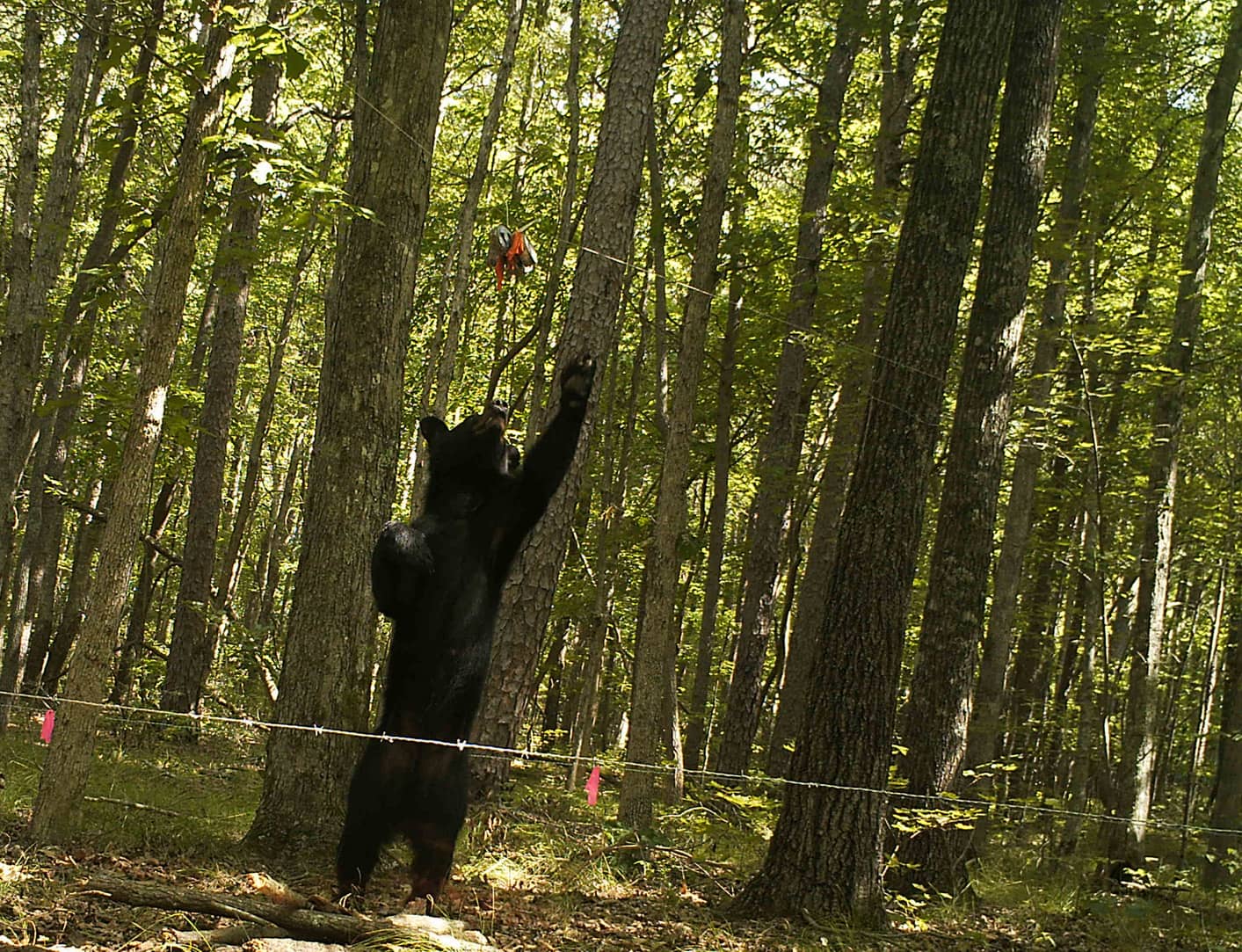Biologists Studying Alabama’s Black Bear Population
Alabama DCNR 11.15.12

Several organizations are studying Alabama’s black bears to better understand their population dynamics. According to the Alabama Department of Conservation and Natural Resources (ADCNR), black bears were once prevalent across Alabama, but, until recently, bears had been relegated to a small and isolated area north of Mobile, mainly due to habitat loss. Officials estimate that approximately 50 bears remain in that population. Although still rare, black bears are being increasingly seen in northeast Alabama.
Recently, bears have begun migrating into the northeast corner of Alabama from Georgia and Tennessee. Bears have established new territories in less populated areas by moving into suitable habitat, particularly in DeKalb and Cherokee counties. There appears to be a gradual increase of bear numbers in these counties.
The reappearance of black bears in northeastern Alabama has generated interest among the scientific community. Scientists from Auburn University, Jacksonville State, and ADCNR’s Division of Wildlife and Freshwater Fisheries are working cooperatively to understand how many bears there are, where they reside, what habitats they use, and their connectivity with bear populations in other states. A variety of non-invasive techniques are being used to answer these questions.
Research is currently underway in the Little River Canyon National Preserve, Talladega National Forest and the Mobile River Basin. Sampling for black bears in northeastern Alabama involves the deployment of hair snares and trail cameras. In the southern part of the state, EcoDogs are also a vital tool. The canines from Auburn’s EcoDogs program are capable of sniffing out and locating bear droppings. Once the hair and droppings are collected, they can be used to determine dietary habits, habitat use and population size.
Black bears are shy and rarely glimpsed in the wild. They are usually black-bodied with brown muzzles. Average body weights of black bears range from 120 to 250 pounds. Interactions with people are infrequent, but if encountered, experts recommend creating loud noises and making yourself appear large to frighten the typically timid black bears away.
Northeast Alabama is fortunate to witness the return of black bears. However, their fate remains uncertain. Bears live in low densities and are not always accepted by neighboring human populations. Additional conservation and research efforts are necessary if black bears are to return permanently. Black bears are fully protected by law. It is illegal to shoot or harm a black bear in Alabama.
The public is encouraged to report black bear sightings or evidence by calling ADCNR Large Carnivore Coordinator Keith Gauldin at the District 5 office in Spanish Fort, Ala., at 251-626-5474; emailing keith.gauldin@dcnr.alabama.gov; or by submitting information online at the Alabama Black Bear Alliance website at www.alabamablackbearalliance.org.

